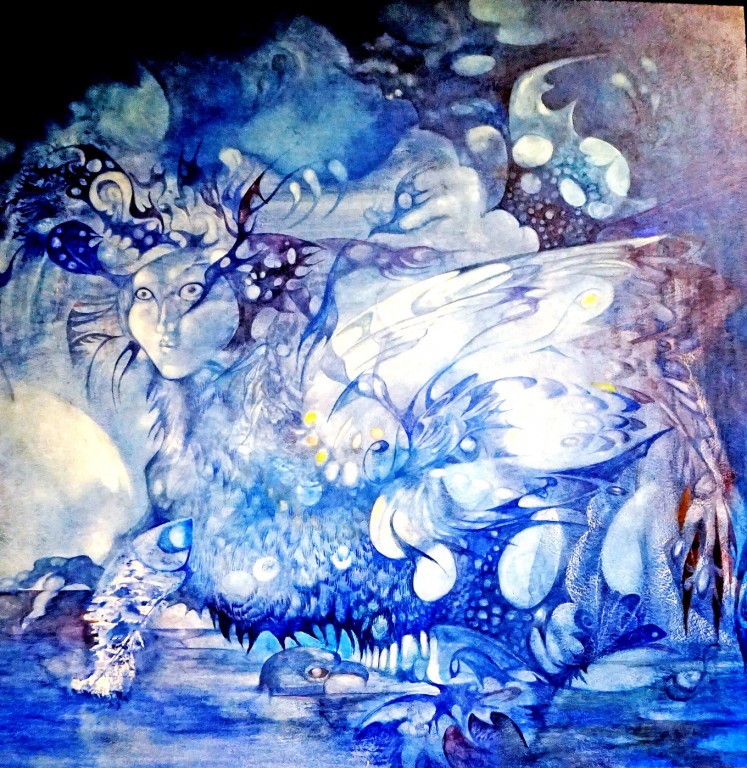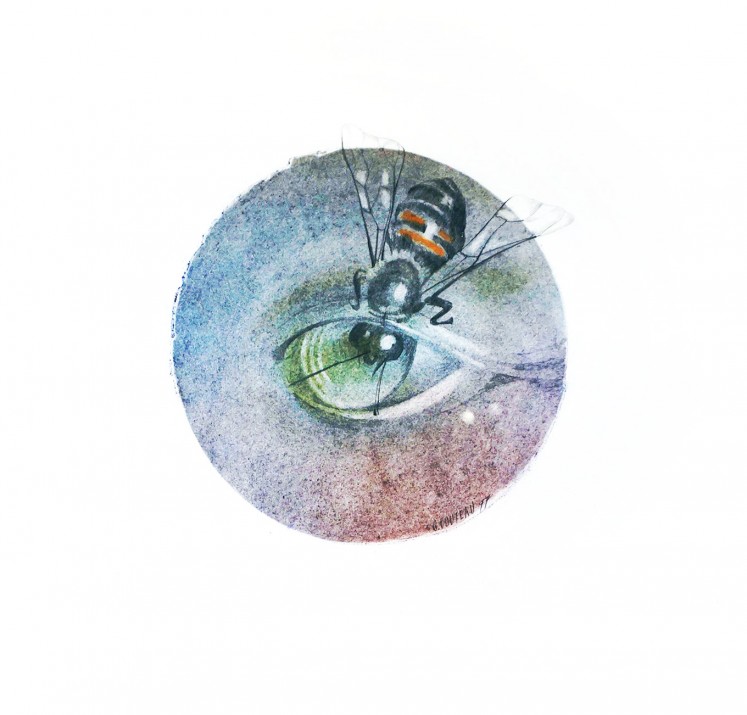Popular Reads
Top Results
Can't find what you're looking for?
View all search resultsPopular Reads
Top Results
Can't find what you're looking for?
View all search resultsGenevieve Couteau: The orient and beyond
Works by the late French artist Genevieve Couteau are replete with intense spirituality, evoking a sense of mystery, awe and fascination.
Change text size
Gift Premium Articles
to Anyone
A
n exhibition at the National Gallery in Central Jakarta presents 70 paintings by Couteau until Feb. 15. The pieces showcase an amazing revelation of the female gaze expressing “the other” in the countries of the orient as part of her own self.
“She sought to define the divine in the human countenance,” Alain Favelle, secretary of the International Association of Art Critics, said in his introduction some 10 years ago.
Looking at her oeuvre, one will find that Couteau’s narrative is infused with a profound sense of culture, mystique and the spiritual.
They do not emanate the human body, which was a major attraction to European male artists coming to Asia. Instead, she was fascinated by the spirit within.
This difference should draw the attention of art historians who chronicle European artists coming to Bali, such as Hofker, Walter Spies, Rudolf Bonnet and Adrien-Jean Le Mayeur.
Now Couteau, the only female artist to visit from Europe, needs to be historically included.
Balinese women (Genevieve Couteau/File)Born in 1925 in Paris, Couteau studied art at Beaux Arts in Nantes. She graduated with flying colors and soon became a prominent artist in the Paris art scene.
She was unique early on, when her exquisite black-and-white drawings earned her the Prix Lafont Noir et Blanc (Lafont Black and White Award) in 1952. Then, her works were already touched by surreal imagery, which was to expand into the mystical in her paintings after she visited the East.
Not surprisingly, Prince Souvannah Phouma of Laos invited her to paint the soul of Laos as a counter to the image of a warring nation.
“Come to Asia,” he reportedly said in Venice, Italy, where she was exhibiting at the time. “You will find there the same magic as in Venice.”
Although it was unusual for a woman amid a reigning patriarchal situation to travel alone, she eagerly accepted the invite.
Cakra Animal that feeds itself from the Moon's rays (Genevieve Couteau/File)Indeed, Couteau found magic in the people of a country that was infused with a sense of the spiritual. She spent six months visiting the palaces of princes, lived with the people, took part in their rites, festivals and ceremonies, visited the markets and pagodas, and held long dialogues with Buddhist monks in monasteries, which nurtured her spiritual senses even more.
“My curiosity was insatiable,” she wrote in her diary.
She noted the unusual colors of Laos illuminating everything, while evoking a sense of melancholy. She was impressed by the serenity of the people, their relaxed behavior; she sensed an intense spirituality.
Prayers at Vat Kaognot (Genevieve Couteau/File)The Sun — featuring a monk looking up at the sun — is among the many works focusing on monks emanating sacred mystery, while Oraison or Prayers at Vat Kaognot, featuring six Buddhist monks each holding a sort of fan, refers to her easy access into the interior of the temples where she was able to have long dialogs with the monks, nurturing her spiritual senses even more.
A prominent feature in many of her paintings is the eye, which her son, renowned art critic and curator Jean Couteau, explains as always looking into the future, such as is also the case in women’s gazes into the distance as if they, like herself, were avoiding reality and wishing to be in another world, a better world.
Hommage du vieux Lempad (Genevieve Couteau/File)The eyes in Hommage au vieux Lempad of legendary artist Lempad showed an owl-like depth. Jean said that through Lempad, Couteau had imagined death. She met him two years before he passed away, but her painting The Old Lempad, featuring him as an emaciated figure with unusual elongated fingers, already gave a sense of what was to come.
Her journey and experiences in Laos are chronicled in her seminal book Mémoire du Laos.
From Laos, Couteau continued her spiritual journey to Bali, where her son had settled earlier.
Life in Bali in the 1970s was still very much attached to tradition, which maintained the slow pace of life. It was exactly what attracted her, revealed Jean.
He said Couteau loved life in Bali; she was fascinated by the dances and the wayang (shadow puppet) theater and was inspired by the natural gestures of the people. She absorbed the folk tales, the myths and legends, and the amazing lightness of life.
“She found beauty everywhere,” said Jean.
Couteau lived in a small house in Ubud, where she was a regular guest at a painter’s house in Padangtegal, where she and the Balinese painter liked to compare each other’s works.
She would then head to Campuan River, where she met women going about their daily activities. The nights were for dances and wayang shadow plays.
Everything was theater, dance and music.
“In Bali, the fantastical is part of the everyday,” she once said.















